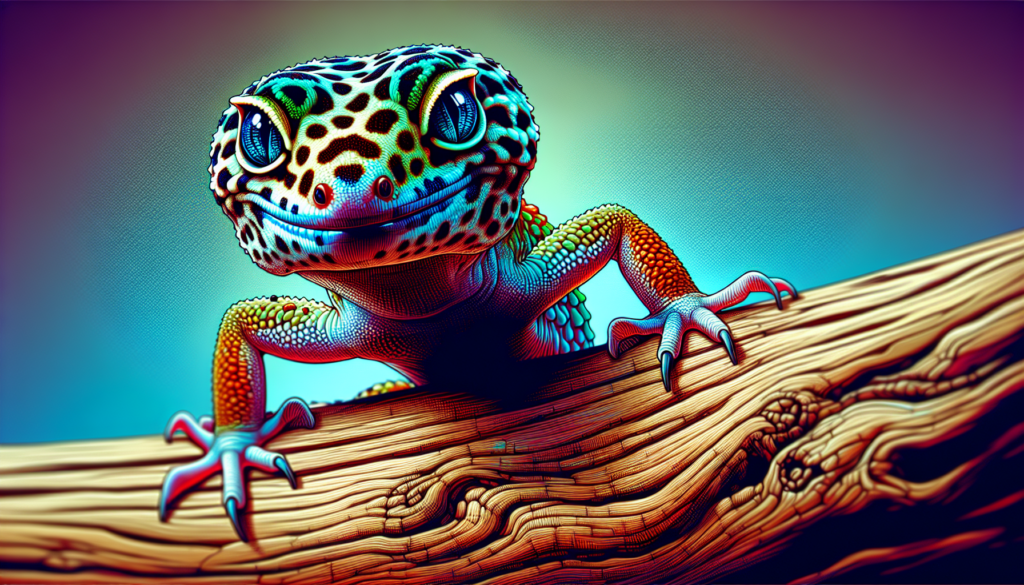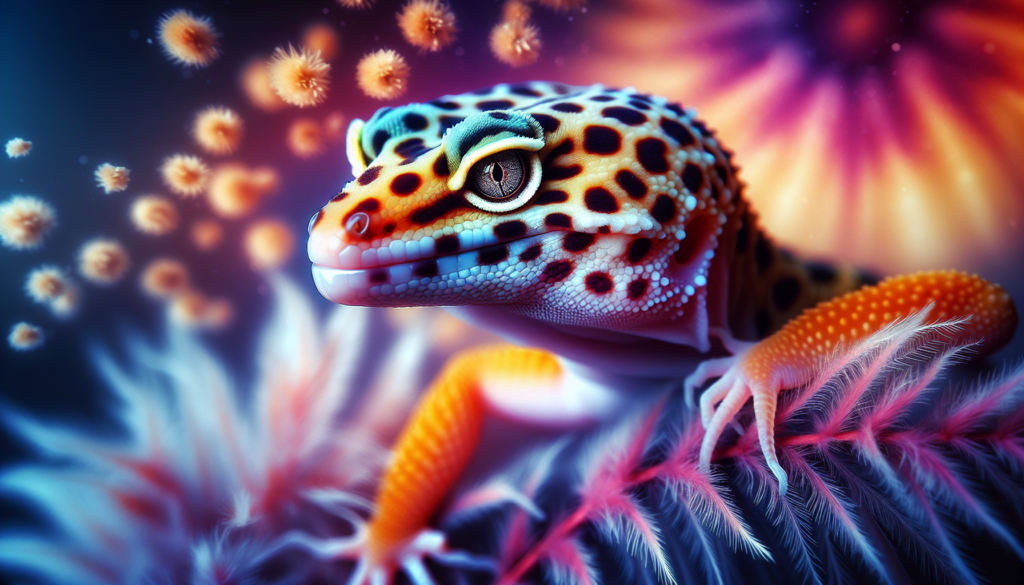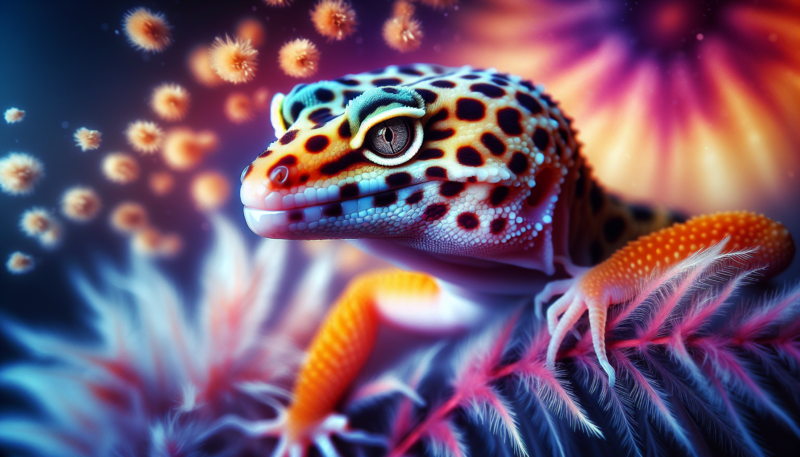Leopard geckos, fascinating creatures with their unique spots and intriguing behavior, may leave you wondering: are they difficult to care for? Well, fret not, because taking care of these beautiful reptiles is actually quite manageable. With their laid-back nature and low maintenance requirements, leopard geckos make great pets for both experienced reptile owners and beginners alike. In this article, we’ll explore the ins and outs of leopard gecko care, from their housing needs to their dietary preferences, providing you with all the essential information you need to ensure your new scaly friend thrives in their habitat. So, let’s get started on this exciting journey of leopard gecko care!

Habitat
A suitable habitat is essential for the health and well-being of your leopard gecko. When it comes to enclosure size, a general guideline is to provide at least a 10-gallon tank for one adult leopard gecko. However, a larger enclosure is always better, as it allows for more freedom of movement. Consider upgrading to a 20-gallon tank or even a terrarium if possible.
Proper lighting and heating are crucial for leopard geckos, as they are ectothermic animals and rely on external sources of heat to regulate their body temperature. A heat source, such as an under-tank heat mat or a ceramic heat emitter, should be provided to create a warm spot in the tank. Additionally, a low-wattage, full-spectrum UVB light can be beneficial for their overall health, although it is not absolutely necessary.
Choosing the right substrate is important for maintaining cleanliness and preventing any potential health issues. Options such as reptile carpet, paper towels, or non-adhesive shelf liner can be used as a substrate, as they are easy to clean and do not pose a risk of impaction if accidentally ingested. Avoid using loose substrates like sand or gravel, as they can be ingested and cause digestive problems.
Leopard geckos are nocturnal and naturally seek out hiding spots during the day to feel secure. Provide multiple hiding spots within the enclosure, such as small caves or hollow logs, where your gecko can retreat to and feel safe. These hiding spots should be easily accessible and placed in various areas of the tank to ensure your gecko doesn’t feel stressed or overcrowded.
Maintaining the correct temperature and humidity levels in the habitat is crucial for the overall health and well-being of your leopard gecko. The ambient temperature in the tank should be around 75-85°F (24-29°C) during the day, with a basking spot reaching 90-95°F (32-35°C). At night, the temperature can drop slightly to around 70-75°F (21-24°C). The humidity level should be kept relatively low, ideally around 30-40% to prevent respiratory issues and skin infections. Monitoring the temperature and humidity levels regularly with a reliable thermometer and hygrometer is highly recommended.
Feeding
Providing a well-balanced and nutritious diet is essential for the health and longevity of your leopard gecko. These reptiles are insectivores, meaning they primarily feed on a diet of live insects. Crickets and mealworms are commonly offered as feeder insects, but other options like dubia roaches, waxworms, and black soldier fly larvae can also be included for dietary variety.
Supplements are necessary to ensure your leopard gecko receives all the essential nutrients it needs. Calcium and vitamin D3 supplements should be dusted onto the feeder insects before each feeding. This helps prevent metabolic bone disease and ensures proper bone development in your gecko. Additionally, a multivitamin supplement can be provided once or twice a week to further support their overall nutritional needs.
Handling
Proper handling techniques are important to ensure the safety of both you and your leopard gecko. Always wash your hands before handling to remove any potentially harmful bacteria or residues that may transfer to your gecko. When picking up your gecko, gently support its body and avoid squeezing or pinching. Let your gecko walk onto your hand or use a gentle scooping motion to lift it up. Avoid grabbing or pulling on the tail, as leopard geckos can drop their tails as a defense mechanism. Although the tail will eventually regenerate, it is best to avoid unnecessary stress and potential injury.
When it comes to handling frequency, it is important to remember that leopard geckos are generally solitary creatures and can be more prone to stress. Allow your gecko sufficient time to adjust to its new environment before attempting to handle it. Start with short and gradual handling sessions, gradually increasing the duration as your gecko becomes more comfortable. Each gecko will have its own tolerance for handling, so it’s essential to observe their body language and responses to determine their comfort level.
Health
While leopard geckos are generally hardy and relatively low-maintenance pets, it’s important to be aware of common diseases and signs of illness. Some common health issues in leopard geckos include respiratory infections, parasites, and metabolic bone disease. If you notice any changes in your gecko’s behavior, appetite, or appearance, it’s crucial to consult a reptile veterinarian promptly. Regular veterinary check-ups are recommended to ensure your gecko receives appropriate preventive care and necessary treatments if required.

Cleaning and Maintenance
Regular cleaning and maintenance of your leopard gecko’s enclosure are essential to provide a clean and healthy environment. Cage cleaning should be done on a routine basis to remove any feces, shed skin, and food debris. Disinfect the enclosure by using a reptile-safe cleaning solution, and ensure all surfaces are thoroughly rinsed before placing your gecko back into the habitat.
Water dish maintenance is crucial to ensure your gecko has access to clean and fresh water at all times. Replace the water daily and clean the dish thoroughly to prevent the growth of harmful bacteria or algae.
Substrate replacement should be done regularly to maintain cleanliness and prevent the accumulation of waste. Depending on the type of substrate used, it may need to be completely replaced every few months or spot cleaned as necessary.
Breeding
Breeding leopard geckos should only be attempted by experienced and knowledgeable reptile keepers who are prepared to handle the unique challenges and responsibilities associated with the process. Determining the gender of leopard geckos can be done by observing specific physical characteristics, such as the presence of pre-anal pores or the shape of the hemipenal bulges. If you are unsure or inexperienced, it’s best to consult with an experienced breeder or reptile veterinarian for accurate gender identification.
Creating a suitable breeding setup involves providing separate enclosures for the male and female geckos, as well as appropriate nesting sites. The female should be well-conditioned with a balanced diet and optimal health before introducing her to the male. Careful monitoring is required during the breeding process to prevent any aggressive behavior or injuries.
Incubating the eggs properly is crucial for a successful hatch. The temperature and humidity levels must be carefully controlled in an incubator to mimic the optimal conditions required for embryo development. It’s important to note that breeding and incubation can be complex processes, and it’s advisable to seek guidance from experienced breeders or reptile experts to ensure the well-being of the geckos and the success of the breeding endeavor.
Socialization
Leopard geckos are generally solitary animals that prefer to live alone. They do not require socialization with other geckos to thrive. In fact, attempting to house multiple geckos together can often lead to territorial disputes, stress, and potential injuries. It is usually best to keep leopard geckos as solitary pets.
However, leopard geckos can form bonds with their owners through regular and gentle interaction. Spending time near the enclosure, talking softly, and offering hand-fed treats can help build trust and create a positive association with their human caregiver. It’s important to remember that each gecko has its own unique personality, and some may be more receptive to these interactions than others. Always respect your gecko’s boundaries and never force socialization if they show signs of stress or discomfort.
Growth and Lifespan
Leopard geckos exhibit size variations depending on genetics, diet, and overall health. On average, adult leopard geckos can reach a length of 7-10 inches. It’s important to note that they grow at their own pace, and providing proper nutrition, a suitable habitat, and regular veterinary care will contribute to healthy growth.
Throughout their lifespan, leopard geckos will go through different growth milestones. Young geckos may experience more rapid growth and shed their skin frequently. As they reach sexual maturity, their growth rate may slow down. It’s important to monitor their growth patterns and ensure they have the appropriate nutritional support during all stages of development.
With proper care, leopard geckos can have an average lifespan of 10-20 years. However, some individuals have been known to live even longer with exceptional care and genetics. Providing a healthy diet, a well-maintained habitat, regular veterinary check-ups, and an enriching environment can greatly contribute to their longevity.
Cost
Before bringing a leopard gecko into your life, it’s important to consider the financial obligations associated with their care. Initially, there will be expenses for the setup, including an enclosure, heating equipment, lighting, substrate, and decor. These costs can vary depending on the size and quality of the items chosen.
Ongoing costs include feeding your gecko a varied diet of live insects, purchasing supplements, and regularly replacing substrate and cleaning supplies. It’s important to provide a balanced diet with high-quality feeder insects, which may result in additional expenses.
Unexpected veterinary expenses should also be considered. While leopard geckos are generally hardy animals, there may be occasions when they require medical attention or specialized care. It’s important to have a financial contingency plan to cover any unforeseen veterinary costs that may arise.
Legal Considerations
Researching local laws and regulations regarding the ownership of leopard geckos is crucial before bringing one into your home. Keep updated on any restrictions, permit requirements, or limitations imposed by your local or state authorities. Some regions may require permits or licenses for keeping leopard geckos, while others may ban or restrict certain species due to conservation concerns. Ensuring compliance with legal requirements is vital to both the well-being of the gecko and your own legal standing as a responsible pet owner.
Illegal trade of leopard geckos poses a significant threat to their wild populations. It’s essential to be aware of the risks associated with purchasing wild-caught geckos or those obtained through questionable sources. Supporting responsible breeders and reputable pet stores that prioritize the welfare and conservation of leopard geckos is crucial to promote ethical and sustainable ownership practices.
